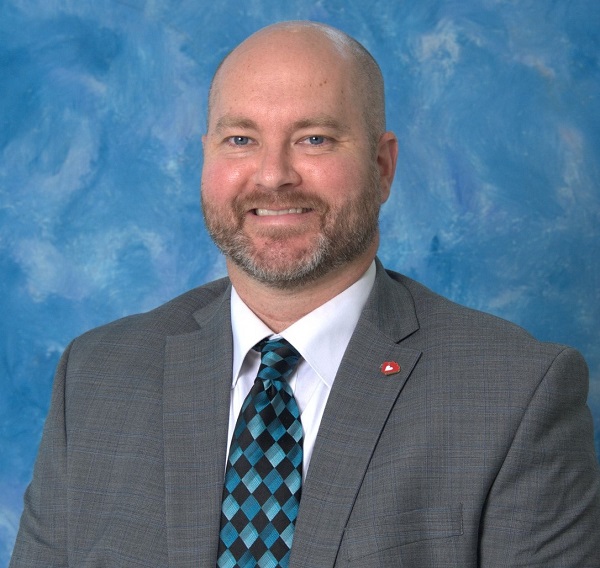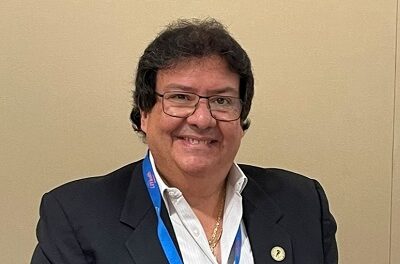By Scott Singer
There were moments of joy, gratitude, anticipation, and more than a few tears during the approximately six years I actively worked with Memorial Healthcare System leadership and teams to make the expansion of Joe DiMaggio Children’s Hospital a reality. Many of us got misty-eyed during the topping-off ceremony last year when the final beam was put in place; while watching a flyover video showing signage being added to the building’s exterior; and, most recently, as our clinical team moved some of the sickest patients across the skyway from the Memorial Regional Hospital side of the street.
In what is so far the most impactful project of my career, our teams not only expanded the children’s hospital from four floors to eight, but did it while the facility maintained the highest standards of quality and safety for patients, families, and staff. Even with construction taking place during the COVID-19 pandemic, the $166 million dollar project was completed on time and within its budget.
Planning for the Future
Joe DiMaggio Children’s Hospital became a free-standing facility in 2011, but even then it was assumed it would grow beyond its four floors as the demand for specialized pediatric services, surgical capabilities, treatments, and programs increased in South Florida. Within three years, conversation began about a vertical expansion and by 2016 the architectural firm HKS was engaged, beginning the design and permitting process. Robins & Morton were hired as general contractors in 2019, with construction beginning in 2020, just prior to COVID shutting down the project for three months.
While the pandemic impacted everyone in healthcare in immeasurable ways, we were fortunate to be able to carry on during the worst of the crisis. After the early shutdown, when we hadn’t yet put the proverbial shovel in the ground, advanced planning by our internal construction services team helped avoid many of the supply chain issues and cost escalations that plagued other construction projects at that time. While there were ultimately some challenges securing all the equipment and specific items the 400,000 square foot building required, it wasn’t anything that derailed our long-term timeline.
Through it all, our goal was to minimize the impact of the work on those within the facility. That took significant coordination with the contractor, and an understanding that some of the loudest aspects of the build could only be done for short periods at certain times. We accounted for the need for patients to heal and families to rest, accommodated surgical schedules, and adapted when entrances, elevators, and parking were compromised.
Fresh Perspective
Since the opening of the new floors last month, I’ve had some time to reflect. And while many of my days and nights during the last two and a half years have been filled with thoughts about structural engineering, infrastructure (electricity, sewage, utilities, etc.), and vendor coordination, I’m now left with the lasting legacy of what we’ve created for patients and families:
- High-tech environments that improve integration within the surgical floors, including an enhanced interventional radiology suite and hybrid, cardiac operating rooms that can simultaneously accommodate both catheter-based procedures and traditional surgeries.
- Innovative technology that offers real-time magnetic resonance imaging (MRI) during brain surgeries.
- An inpatient rehabilitation gym with an outdoor terrace, several therapeutic rooms, a sensory room, a Virtual Reality treadmill, and a Bioness Vector Track.
- A Garth Brooks Teammates for Kids Child Life Zone, made possible in part by a generous donation from the Finker-Frenkel Family Foundation, with a daily itinerary of activities and exhibits for kids of all ages, expressive and therapeutic play areas, production space for in-house “Joe D. TV,” and open places to host yoga, music, art, and special events.
- Larger and more efficient space for the pediatric pharmacy.
- Expanded pediatric ICU capabilities.
Lessons Learned
A project of this size and scope is only possible with good planning and great partners. That includes the Joe DiMaggio Children’s Hospital Foundation, whose “Catch the Love” capital campaign underwrote more than a third of the overall cost.
Internal and external organizations that align with your mission and values become the relationships critical to success over the course of months and years. These strong alliances keep work on track, within budget, and enable results far beyond what could have been accomplished in individual silos.
I’m fulfilled knowing what we’ve done will have life-changing and life-saving impact. And, speaking for all those who feel they’ve left a piece of their heart in that building, that’s all they ever wanted.
Scott Singer is associate administrator at Joe DiMaggio Children’s Hospital.




























